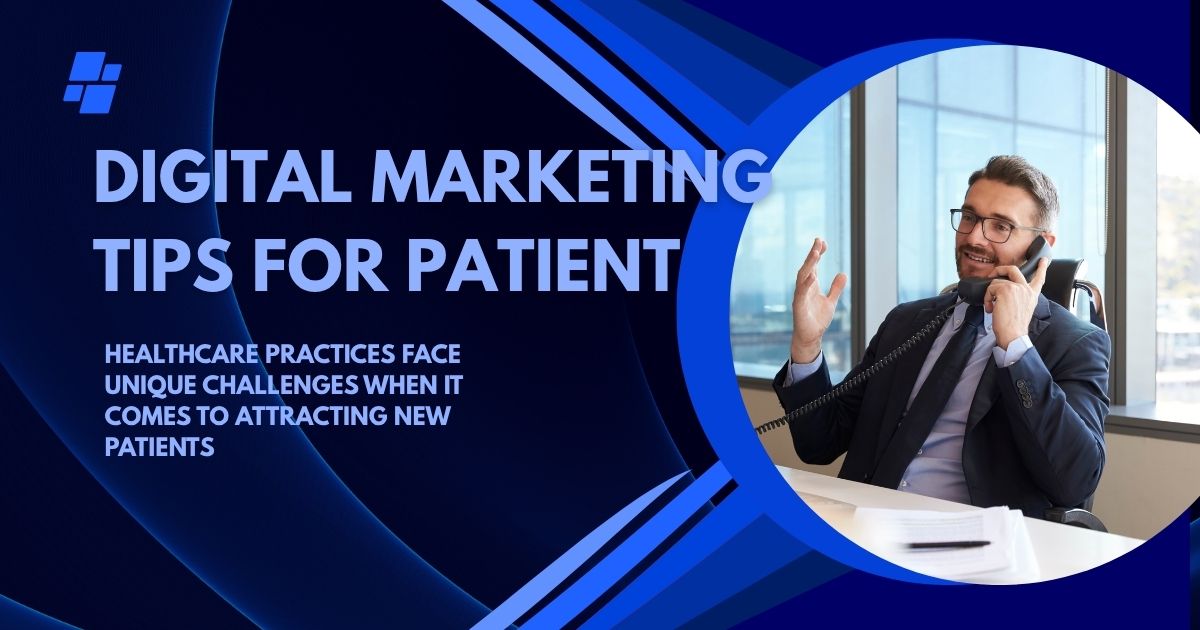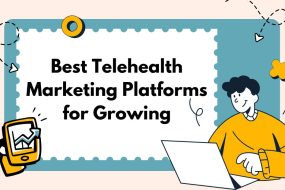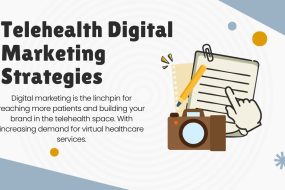
Healthcare practices face unique challenges when it comes to attracting new patients. Unlike other industries, medical marketing requires a delicate balance of professionalism, trust-building, and compliance with strict regulations. The good news? Strategic digital marketing can transform your practice from a well-kept secret into a thriving healthcare destination.
This comprehensive guide will walk you through proven digital marketing strategies specifically designed for patient acquisition. From search engine optimization to social media engagement, you’ll discover actionable tactics that respected healthcare practices use to grow their patient base while maintaining the highest standards of medical professionalism.
Build Trust Through Your Website Foundation
Your website serves as the digital front door to your practice. Most potential patients will visit your site before scheduling an appointment, making it crucial to create an experience that builds confidence from the first click.
Create Patient-Focused Content
Focus on addressing common patient concerns and questions. Instead of filling your pages with medical jargon, write content that speaks directly to patient needs. For example, rather than listing technical procedure details, explain how treatments will improve quality of life or reduce pain.
Develop dedicated pages for each service you offer, but frame them around patient benefits. A dermatology practice might create pages titled “Clear Skin Solutions for Teens” rather than “Acne Treatment Protocols.”
Optimize for Local Search
Local SEO forms the backbone of successful patient acquisition. Most people search for healthcare providers within their geographic area, making local optimization essential.
Claim and optimize your Google Business Profile with accurate information, regular updates, and professional photos. Include your full address, phone number, and current operating hours. Add photos of your facility, staff, and waiting areas to help potential patients visualize their visit.
Create location-specific content that mentions your city, neighborhood, and surrounding areas. If you serve multiple locations, develop separate pages for each office with unique content and local information.
Ensure Mobile-Friendly Design
More patients search for healthcare providers on mobile devices than desktop computers. Your website must load quickly and function seamlessly across all devices.
Test your site’s mobile performance regularly. Pages should load within three seconds, buttons should be easy to tap, and forms should be simple to complete on smaller screens.
Leverage Search Engine Optimization for Patient Discovery
SEO helps potential patients find your practice when they search for relevant healthcare services. Effective medical SEO requires understanding how patients search for healthcare information.
Don’t miss these Patient Acquisition Strategies
Target Patient-Focused Keywords
Research the terms your potential patients actually use when searching for healthcare services. Patients often search using symptoms rather than medical terminology. Someone might search “constant headaches” rather than “chronic cephalgia.”
Create content around these patient-focused search terms. Develop blog posts, FAQ sections, and service pages that address common symptoms, concerns, and questions using the language patients naturally use.
Build Authority Through Educational Content
Search engines favor websites that demonstrate expertise and authority. Regular blog posts that educate patients about health topics relevant to your practice can significantly improve your search rankings.
Write about prevention strategies, treatment options, and health tips within your specialty. A physical therapy practice might create content about desk ergonomics, injury prevention for athletes, or exercises for common conditions.
Keep content accessible and actionable. Break complex medical information into digestible sections with clear headings and bullet points.
Master Social Media for Patient Engagement
Social media platforms offer unique opportunities to connect with potential patients and showcase your practice’s personality and expertise.
Choose the Right Platforms
Different social media platforms serve different purposes for healthcare marketing. Facebook works well for community building and patient education, while Instagram excels at showcasing your practice culture and behind-the-scenes content.
LinkedIn serves as an excellent platform for building professional relationships and establishing thought leadership within your medical specialty.
Share Educational and Engaging Content
Post content that educates without providing specific medical advice. Share health tips, wellness information, and general educational content related to your specialty.
Feature your team members through staff spotlights, behind-the-scenes content, and practice updates. This humanizes your practice and helps potential patients feel more comfortable choosing your services.
Maintain Professional Boundaries
Healthcare social media requires careful attention to privacy and professional standards. Never share patient information, even with permission, and avoid giving specific medical advice through social media channels.
Focus on general health education, practice updates, and community involvement rather than individual patient cases or specific medical recommendations.
Implement Email Marketing for Patient Retention and Referrals
Email marketing serves dual purposes in healthcare: retaining existing patients and encouraging referrals from satisfied patients.
Develop Valuable Newsletter Content
Create monthly newsletters that provide health tips, practice updates, and educational content. Include seasonal health advice, such as flu prevention tips or summer safety reminders.
Feature different services throughout the year to remind patients of your full range of capabilities. A family practice might highlight preventive care in January, allergy management in spring, and travel health in summer.
Automate Patient Communication
Set up automated email sequences for new patients that introduce your practice, explain what to expect during visits, and provide helpful preparation information.
Create reminder systems for annual checkups, screenings, and follow-up appointments. This improves patient care while maintaining steady appointment volume.
Optimize Online Reviews and Reputation Management
Online reviews significantly influence patient decisions. A strong review management strategy can substantially impact patient acquisition.
Encourage Reviews from Satisfied Patients
Develop a systematic approach to requesting reviews from happy patients. Train your staff to mention reviews during checkout, and consider including review requests in follow-up communications.
Make the review process as simple as possible by providing direct links to your preferred review platforms. Google Reviews, Healthgrades, and specialty-specific platforms like Zocdoc all contribute to your online reputation.
Respond Professionally to All Reviews
Respond to positive reviews with genuine appreciation. Thank patients for their feedback and their trust in your practice.
Address negative reviews professionally and constructively. Avoid defensive responses and focus on demonstrating your commitment to patient satisfaction. Never discuss specific patient details in public responses.
Use Video Marketing to Build Connection

Video content creates stronger emotional connections than text or images alone. Healthcare practices can use video to build trust and familiarity before patients ever step foot in the office.
Create Educational Video Content
Develop short videos that explain common procedures, introduce staff members, or provide health tips. Keep videos under three minutes for maximum engagement.
Virtual office tours help anxious patients feel more comfortable about their first visit. Show your waiting room, treatment areas, and introduce key staff members.
Share Patient Success Stories
With proper permissions, patient testimonials in video format can be incredibly powerful for patient acquisition. Focus on the patient experience rather than specific medical details.
Consider creating animated or voice-over testimonials that protect patient privacy while still sharing powerful success stories.
Measure and Adjust Your Marketing Efforts
Successful patient acquisition requires ongoing measurement and optimization of your marketing efforts.
Track Key Performance Indicators
Monitor website traffic, conversion rates, and patient acquisition sources. Use tools like Google Analytics to understand which marketing channels drive the most patient inquiries.
Track phone calls, appointment bookings, and form submissions that result from your digital marketing efforts. This data helps you allocate resources to the most effective strategies.
Analyze Patient Feedback
Regularly review patient feedback to understand what attracts patients to your practice and what might deter them. Use this information to refine your marketing messages and improve patient experience.
Survey new patients about how they found your practice and what influenced their decision to choose your services over competitors.
Building Long-Term Patient Relationships Through Digital Marketing
Effective healthcare marketing extends beyond initial patient acquisition to building lasting relationships that generate referrals and repeat business.
Focus on creating genuine value for your patients through every digital touchpoint. Whether through educational content, convenient online scheduling, or responsive customer service, every interaction should reinforce your commitment to patient care.
Remember that healthcare marketing is ultimately about connecting people with the care they need. By implementing these digital marketing strategies thoughtfully and consistently, you’ll build a practice that not only attracts new patients but also provides exceptional care that keeps them coming back.
Start with one or two strategies that align with your practice’s strengths and resources. As you see results, gradually expand your digital marketing efforts to create a comprehensive patient acquisition system that supports your practice’s growth for years to come.


















No Comments